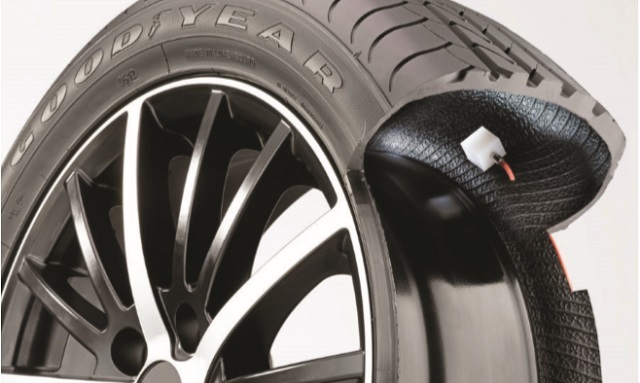
They will be smart and communicate
A recent article in Autocar noted how tyre manufacturers sometimes come up with wacky-sounding concepts. But, it said, one idea consistently touted has been the value of smart tyres that can communicate their condition and wear status. It described a Smart Tire; with treads made from Liquid Farnesene Rubber (LFR) which helps the tyre to remain efficient for longer, with better wet grip performance, and Active Tread technology that senses road conditions and detects moisture and cold temperatures, allowing the tread to adapt to the conditions.
Goodyear’s intelligent tyre prototype, shown in 2017, offered more with applications, including interaction with an autonomous car system in real time. The 3D-printed Eagle 360 Urban, whose skin is outfitted with a sensor network that allows it to check on its own status and cull information on the environment, including the road surface. The tire could also activate built-in actuators in real time to change the shape of its surface and tread depending on the current state of the road beneath it. Continental is also experimenting with smart tyres and embedded sensors.
The importance of tyres is sometimes underestimated by drivers and new technologies should improve grip, reduce wear and improve safety, the Autocar article concluded.
Elsewhere, it has been noted that vehicle tyres are getting attention in part because they have to play catch-up to the new gadgetry found under the hood or on the dashboard of vehicles. Sensors embedded in them can provide users with more data than what today’s tire pressure monitoring system (TPMS) offers. These sensors can signal when it’s time to change a tire or report details about uneven and dangerous tire conditions. The tyre is able to provide real-time information on road conditions, tread wear and depth, pressure and temperature, load detection, and other factors.
In March, 2017, Italian tyre manufacturer Pirelli unveiled its Cyber Car system, which features tire sensors that can track the status of the tire and transmit data to an electronic control unit inside the car. Information about pressure, internal temperature, and tread depth is integrated into the Cyber Car system, which is then able to work with the car’s onboard computers to adjust the anti-lock braking system and stability control to suit the tyre conditions.
These are the kind of data vital to increasingly sophisticated vehicle management systems. Remember, one of the most common causes of car crashes is insufficiently cared-for tyres.
****
 The Independent Uganda: You get the Truth we Pay the Price
The Independent Uganda: You get the Truth we Pay the Price



